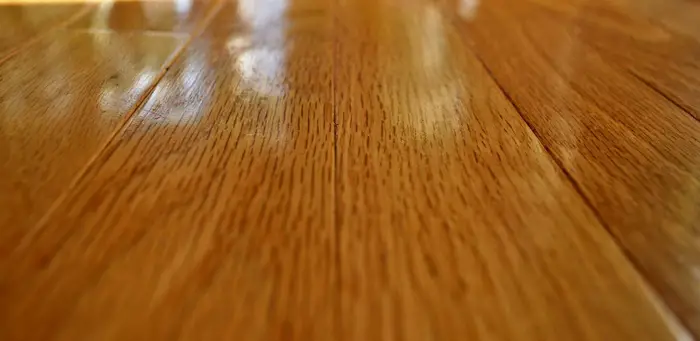You have had a productive day painting some rooms in your house or the shed that you have been wishing to paint. It was a fun day because even your children took part and it served as a perfect family day.
Now the job is done but looking at your kid’s clothes, it is all in a mess. You know children playing with paint without rolling up their sleeves. Now you are wondering how you are going to get all those oil paint stains out. Do you toss the clothes into the washer?
If you wash oil paint-stained clothes in a washing machine, will the paint ruin your washer? While the washer might not be ruined, washing oil paint clothes in the washer is not recommended. The paint might ruin other items put together in the washer. You wouldn’t want this, so avoid oil paint-stained clothes in the washer. Additionally, if the clothes have a lot of paint thinner, they might even cause a fire hazard in the dryer for washers that have in-built dryers.
This article explains how to remove oil paint stains from clothes, what to avoid putting in the dryer, how to remove oil paint in the dryer, and other related questions. Keep reading for a deeper insight.
How to Remove Oil Paint from Clothes
It is clear that you shouldn’t toss clothes with paint into your washer. This takes us to the next step. What do you do with these clothes? Well, before tossing them into the washer, you first need to get rid of the oil paint stains.
First, you need to know the type of paint in question. Water-based paints are easier to remove compared to oil-based paints. Below are guides for getting rid of the two types of stains:
- Removing Water-Based Paint Stains
As mentioned, water-based paints such as latex and acrylic are easier to remove as seen in the steps highlighted below.
- Use a dull knife, spoon, or brush to scratch off as much of the dried paint as you can.
- On the backside of the stain, flush through warm running water, to try to get off as much of the remaining paint. You can also blot it with a clean piece cloth or towel.
- Using a mixture of warm water and detergent, blot the stain. Rinse and repeat the process until you make sure the paint stain has come out.
- Once you do this, you can now toss it into a normal cycle in the washer. You can also add a stain remover, as you do normally. If the stain remains, you can use a non-acetone nail polish remover or hairspray, and then repeat the washing process.
- Removing Oil-Based Paint Stains
Oil-based paints are a bit difficult to come out, and you may need to apply more aggressive or vigorous cleaning agents. For best results, follow the steps below:
- Turn the clothes inside out and blot the stain from the back using the recommended paint thinner or turpentine. Blot until no more paint is absorbed.
- Rinse out the remaining stain on running water.
- Let the cloth soak in warm water mixed with dishwasher detergent overnight. To get the right water temperature, check the cloth’s label.
- After a fortnight, you can now rinse it off and wash it normally in your washing machine. You can even add a stain remover just to be sure the stains comes out completely.
Removing Oil and Grease from the Washing Machine
If you knew that you shouldn’t wash oil paints in the washer, you are safe. However, if you didn’t or if you accidentally tossed oil-stained clothes in the washer, here is a guide to help you get rid of the oil or grease from the washer.
- Sprinkle some baking soda on a wet sponge, and use it to scrub the inside of the washer to scour away the oil. Occasionally rinse off the sponge, add more baking soda, and continue scrubbing.
- For the grooves and tight spaces, use a toothbrush. Remember to sprinkle some baking soda on it as well.
- Using a damp cloth, wipe away the baking soda and the oil residue. Proceed to dry the metal surfaces using a dry cloth.
- Finally, run the washer on a full cycle with hot water. A cup of white vinegar added to the wash cycle will get rid of any remaining oil traces. Leave the door open after completing the cycle so that the washer can air-dry.
Washing Machine Blunders to Avoid
Apart from the issue of oil paints, here are other laundry blunders to avoid if you want to get the best out of your washer.
- Avoid overloading your washer, as this will produce poor wash results. Additionally, overloading will damage the drum spins and eventually the washer will be damaged. Luckily, modern machines will not even start if overloaded.
- Do not use too much detergent because even after the final rinse, the detergent will still be lurking on the clothes. This may not play out so well, especially on dark clothes.
- Avoid mixing colored with whites. Otherwise, you will discolor most of your clothes and end up with dirty greys.
- Ensure you get the water temperature right to avoid shrinkage or overstretching of clothes.
- Remember that the machines too needs some cleaning, otherwise with time, they will produce an unpleasant smell.
- Given the superfast speed at which the washer spins, if it is not leveled properly on the ground, it could easily break down.
- Do not put belts or leave coins in the pockets. While spinning, such things can break the door glass. Forgotten tissue paper can also create a mess; just remember to empty pockets.
- Read your washer’s manual and use the right wash programs for each fabric.
See Also: 7 Best Washing Machine For Comforters
Related Questions
What can damage a washing machine?
Four things can primarily damage your washing machine. They include open zippers, forgotten coins, overloading, and too much detergent.
What makes a washer smell like oil?
With time, your washer may start smelling like oil. This could be because you use a mild detergent and low water temperature, and this results to the buildup of oil residue. You can remedy this by cleaning up your washer, using hot water, and a stronger detergent for your laundry.
See Also:
Can You Put Dishwasher Tablets In The Washing Machine
4 Best Washing Machine For Electricity Consumption


